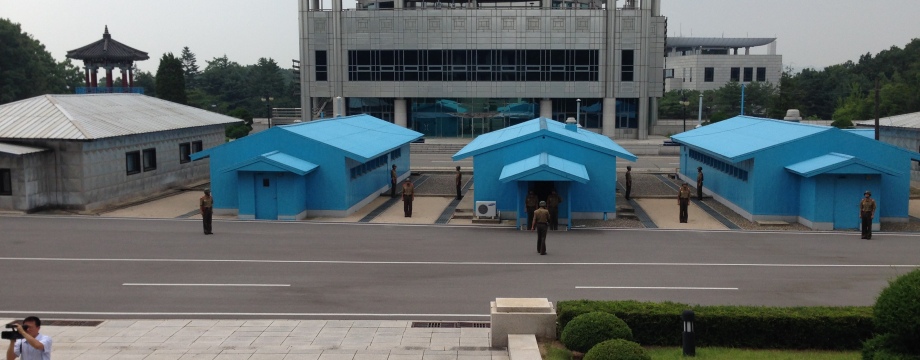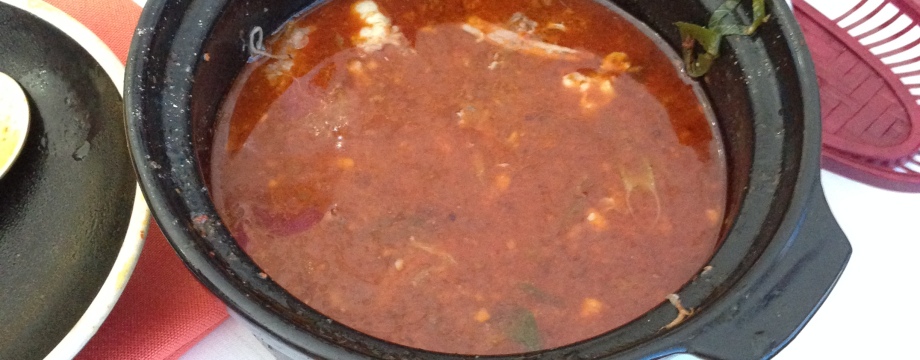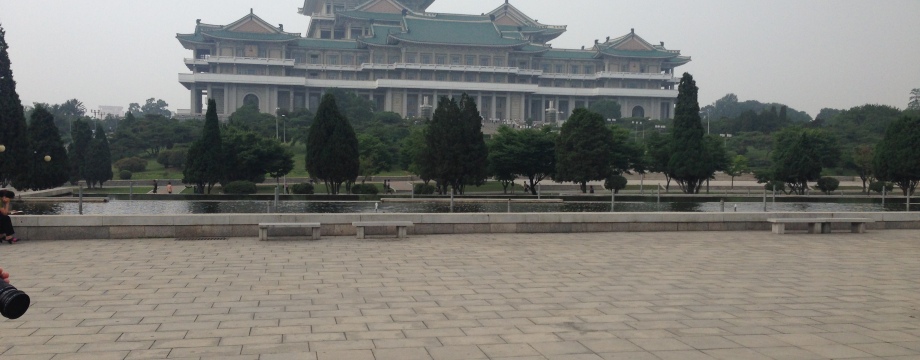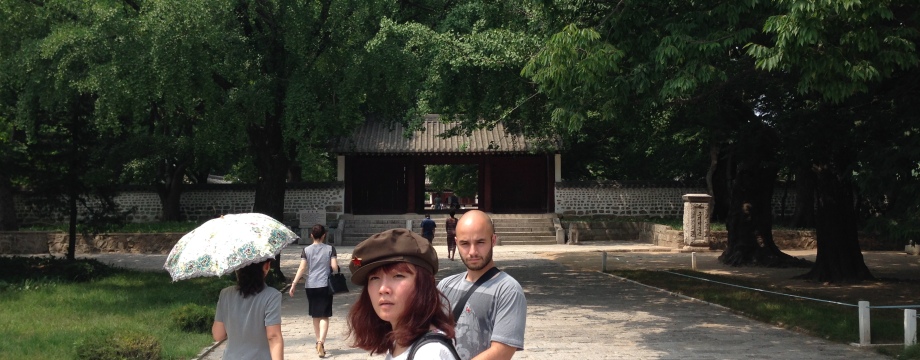On our second day in North Korea we travelled to Panmunjom, the heart of the Demilitarised Zone. This would be the second time that I’d been here, the last time being from the South.
Road to Panmunjom
We had to set off early to get to Panmunjom. One of the tunnels on the road down were under repair meaning we would have to take a detour.
We had drank quite a bit the night before, so I dragged myself out of bed with barely enough time for breakfast. I still managed to get some food in Restaurant Number One before we had to catch the bus.
Once we hit the road I noticed something about the North Korean countryside. There were a lot of dragonflies. I have a minor obsession with them. Growing up in the UK there were always dragonflies around, but they have been dying out in recent years. Except for some areas of the UK they are pretty rare now.
After some time travelling we stopped at what seemed like a North Korean service station. Hot tea, noodles and various other snacks were for sale on the side of the road. I got talking to an old Chinese lady who had North Korean heritage. She was here to reconnect with her heritage. There were many other Chinese tourists on this road with us. Tours in North Korea are pretty popular with the Chinese – many of their families have history with the Korean War.
We went back on the road and continued going through mountain tunnels. There are two main things they don’t want you to take pictures of: farmers and military activity. So it was a shame that we couldn’t take any photos of the countryside during our detour around the damaged tunnel.
The countryside was beautiful, with rice farms stretching out to great mountains in the distance. Every home we were close enough to see had a vegetable garden out the back. I didn’t see any livestock farmers – the only cows I saw were beasts of burden rather than food.
There was also a fair amount of military activity out here. At one point we drove past a soldier carrying a rocket launcher and our guide jokingly told us it was a ‘toy’.
Our guide had mentioned earlier during the tour that the DPRK was focusing on miitary build up for two main reasons. The first being that the military could help construct new facilities all over the country. The second was so the country could protect itself from outside invasion.
We got back to the main road and there were only a few more tunnels before we reached the checkpoint. There was a shop here selling Panmunjom souvenirs. There were several Chinese tourists here waiting for their turn to go through. I only saw one or two other Western tourists. I decided to buy a T-Shirt with the DPRK flag on it and the words Panmunjom. Later I would wear this to work, failing to take into account that my boss was South Korean. That was an awkward situation.
Eventually it was our turn to go through the checkpoint and our tour guides gathered us up. Our guides told us to line up and gave instructions on how to cross the checkpoint in single file. Once through we would be in the Demilitarised Zone.
North Korea Peace Museum
Our first stop in the DMZ was the North Korea Peace Museum. There are two buildings here. The first building was constructed to house the signing of the Armistice Agreement between the North and the South. This was an agreement to cease all hostilities, but not a peace treaty. This means that the Korean War has technically never ended.
When we entered this building we could see the table where they signed the treaty. The guides directed the Chinese tourists to one side of this table and the Western tourists to the other side. They explained, first in Chinese, that the US and South Koreans were on our side and the Chinese and North Koreans were on the other side. Separating us was to add to this effect.
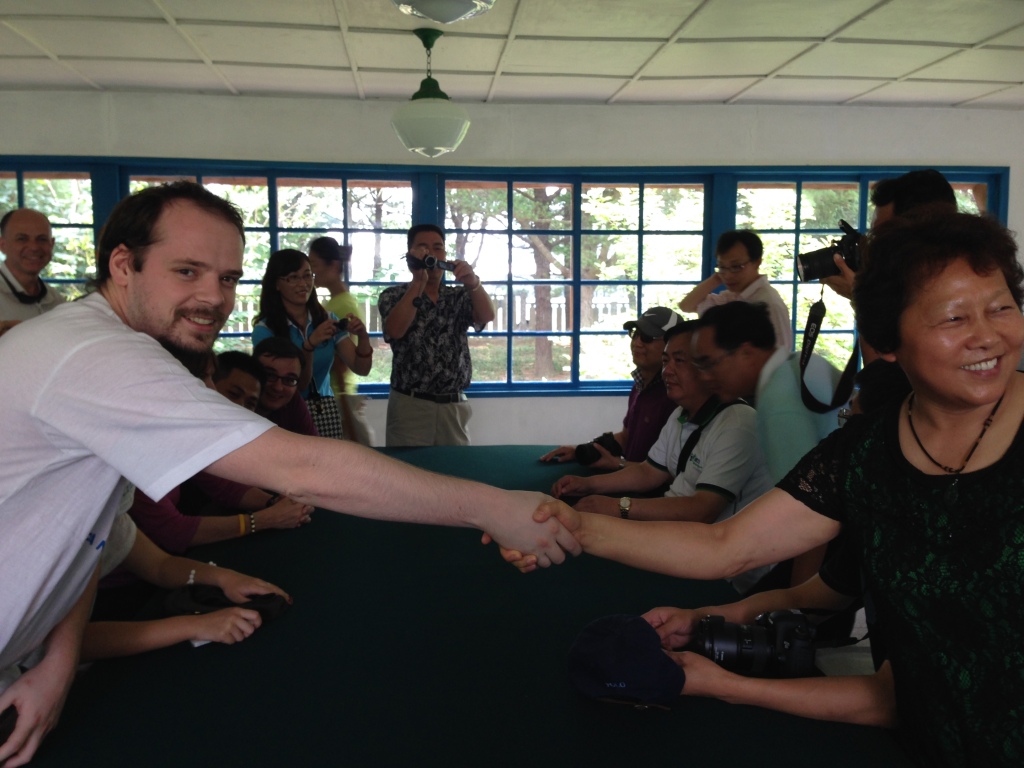
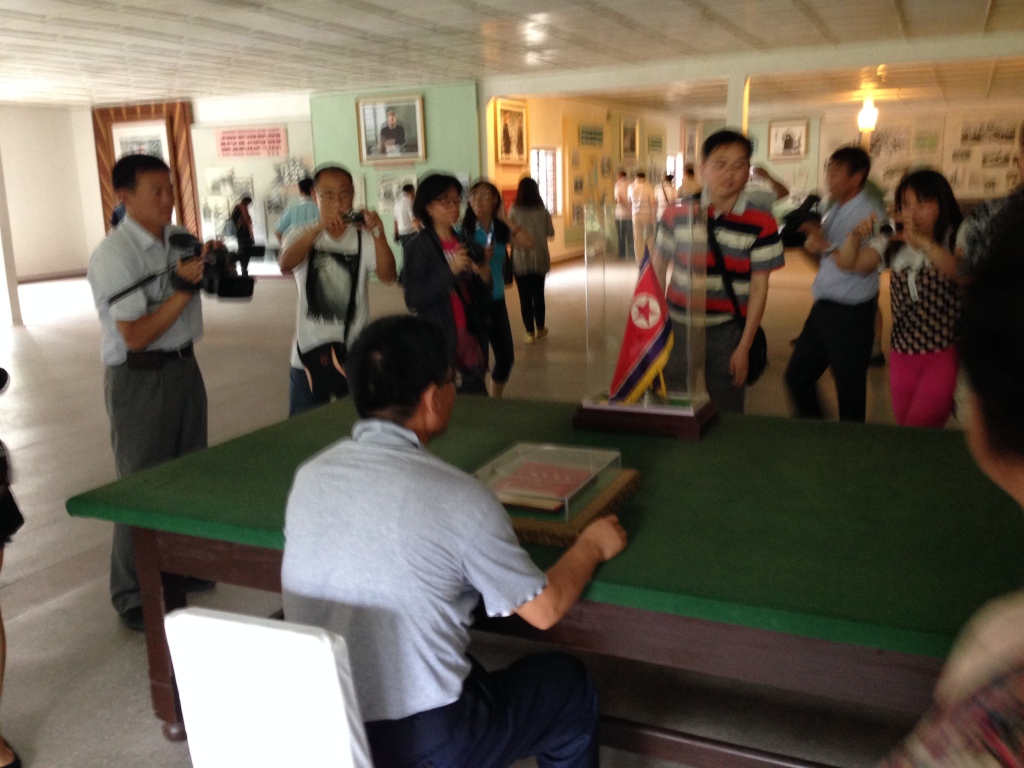
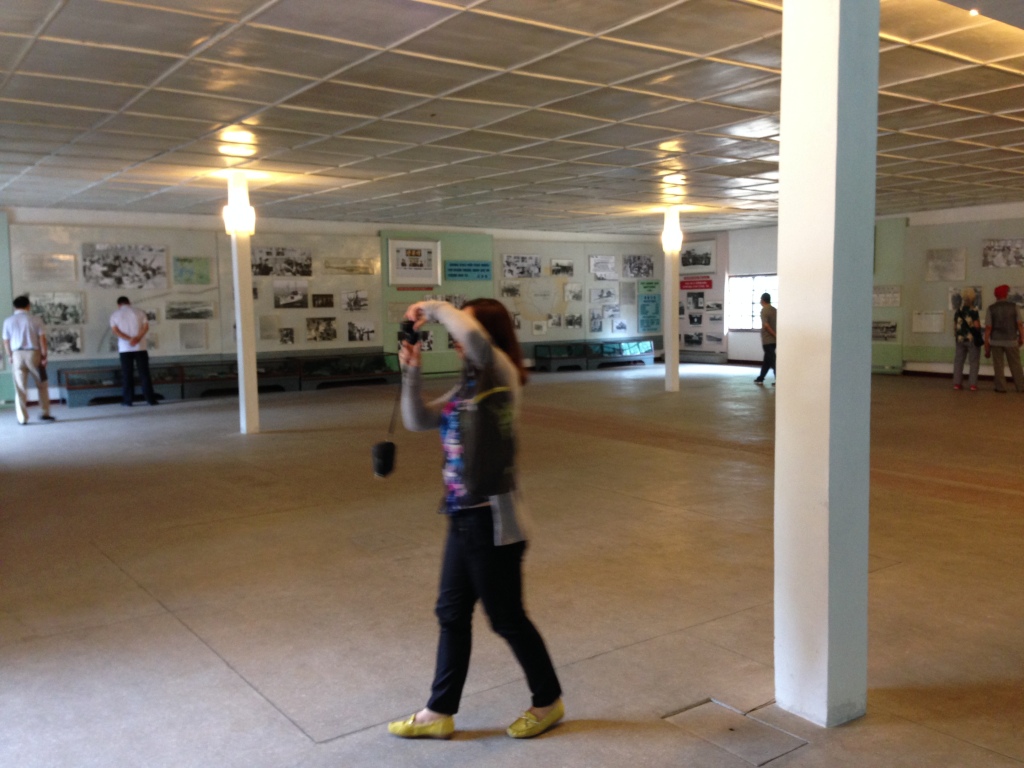
After taking some pictures shaking hands with our fellow Chinese tourists across the table we moved on.
The next building was more of a museum. It housed a copy of the Armistice Agreement amongst many other war relics and photos. There wasn’t that much to see here, but there were some interesting historical moments captured on film.
Panmunjom
Our next stop was Panmunjom itself. This is the spiritual center of the DMZ, the place where the North and the South watch each other like hawks. On the road down I spotted the giant DPRK flag staring across at the South Korean flag. Last time I was here our US tour guide told us that there was a competition to see who could build the biggest flag. I think the DPRK is still winning this one.
On our way to Panmunjom they briefly mentioned the axe incident. We were given a much more complete story in the South. It makes sense that they wouldn’t talk too much about it here though. The story isn’t too flattering to the DPRK. It was still surprising for me to hear them mention it at all.
When we arrived we met the General who would show us the area. He led us to a commemorative plaque that had Kim Il-Sung’s signature carved into it.
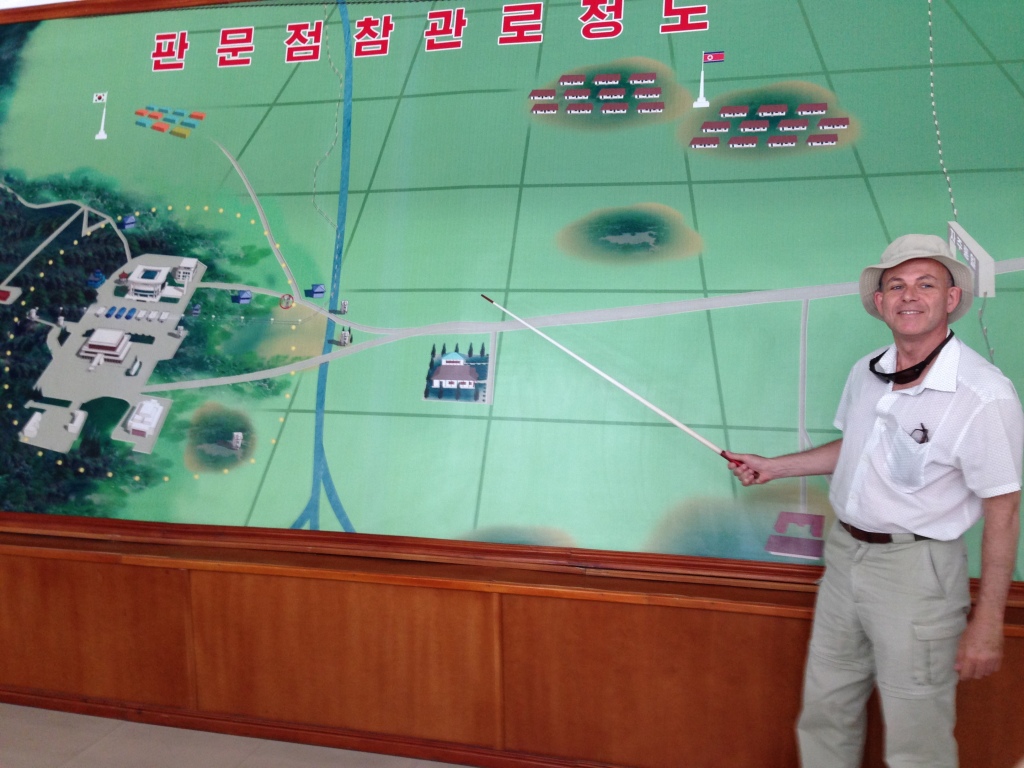
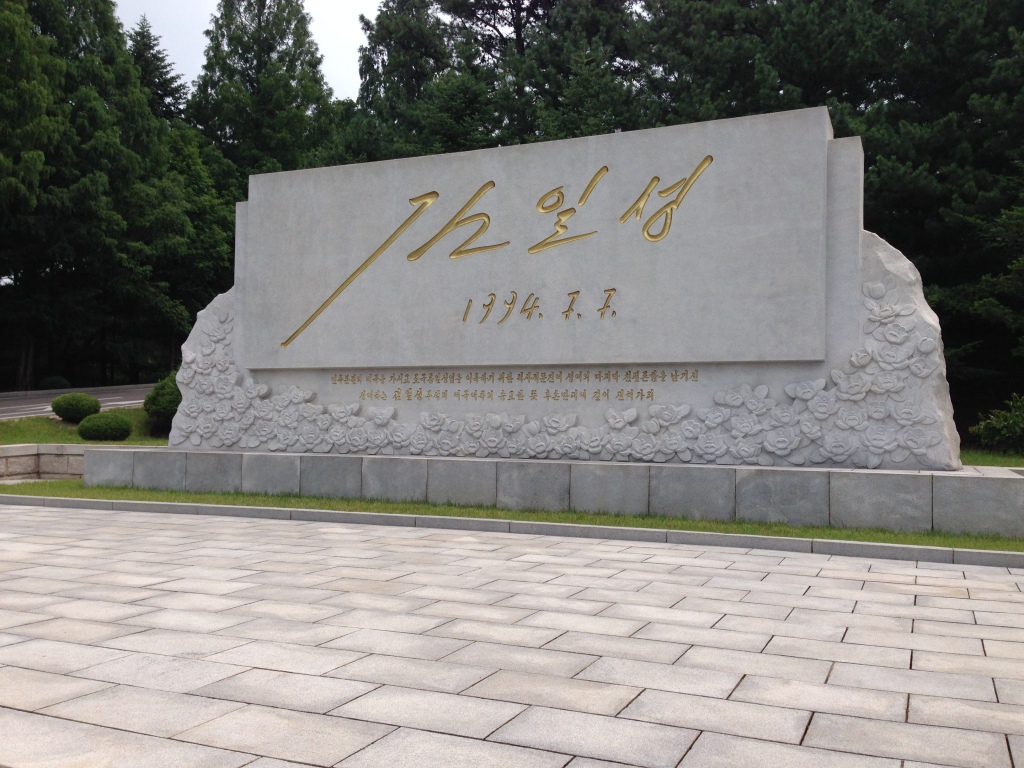
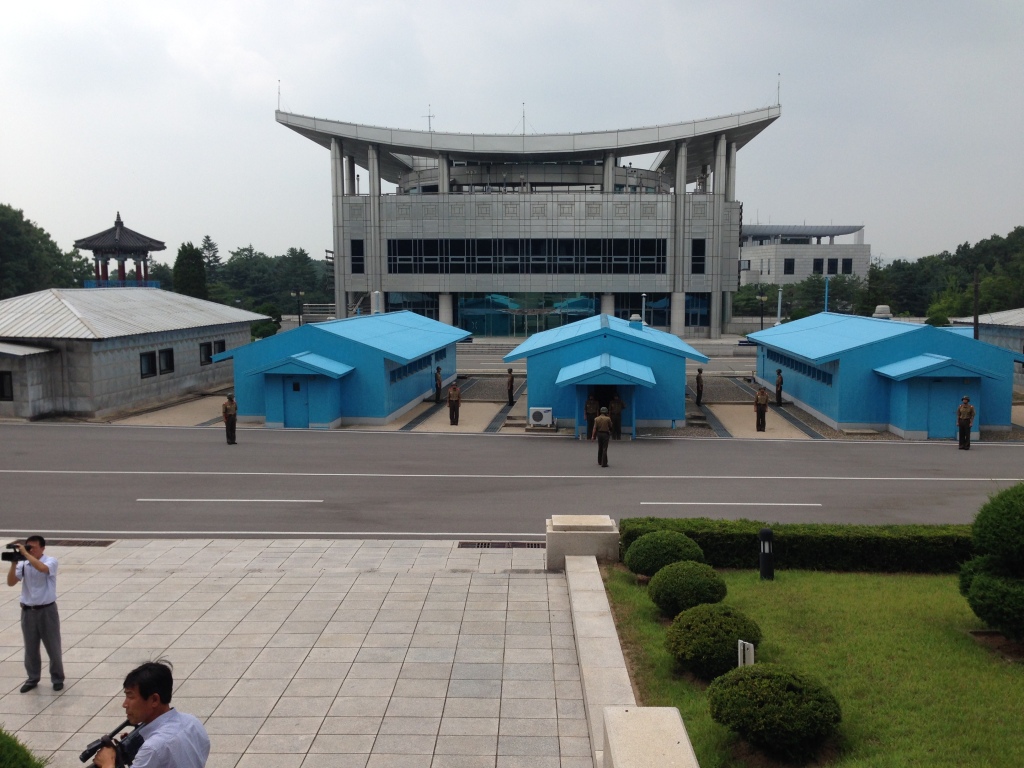
He then led us around the corner and as I spotted the blue buildings I realised where I was. I was looking forward to seeing the South Korean soldiers again.
But the south side was completely empty. No soldiers, no people, nothing. If there was anyone watching the area they were well hidden.
My first time here there were Soldiers everywhere. Standing guard, watching the North, protecting the South. Now I started to feel that it was a show they put on for tourists.
We went down to the blue buildings. These buildings are placed across the border. Their purpose is to facilitate meetings between the two sides. Inside these buildings is the only place you can safely cross the border in the DMZ.
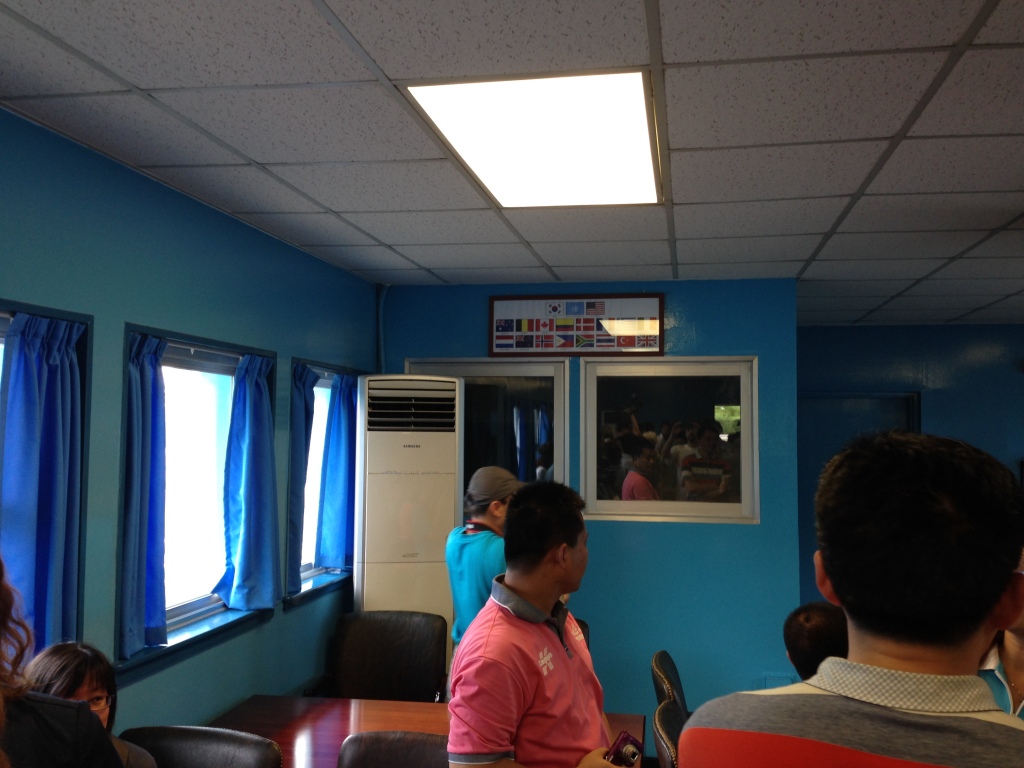
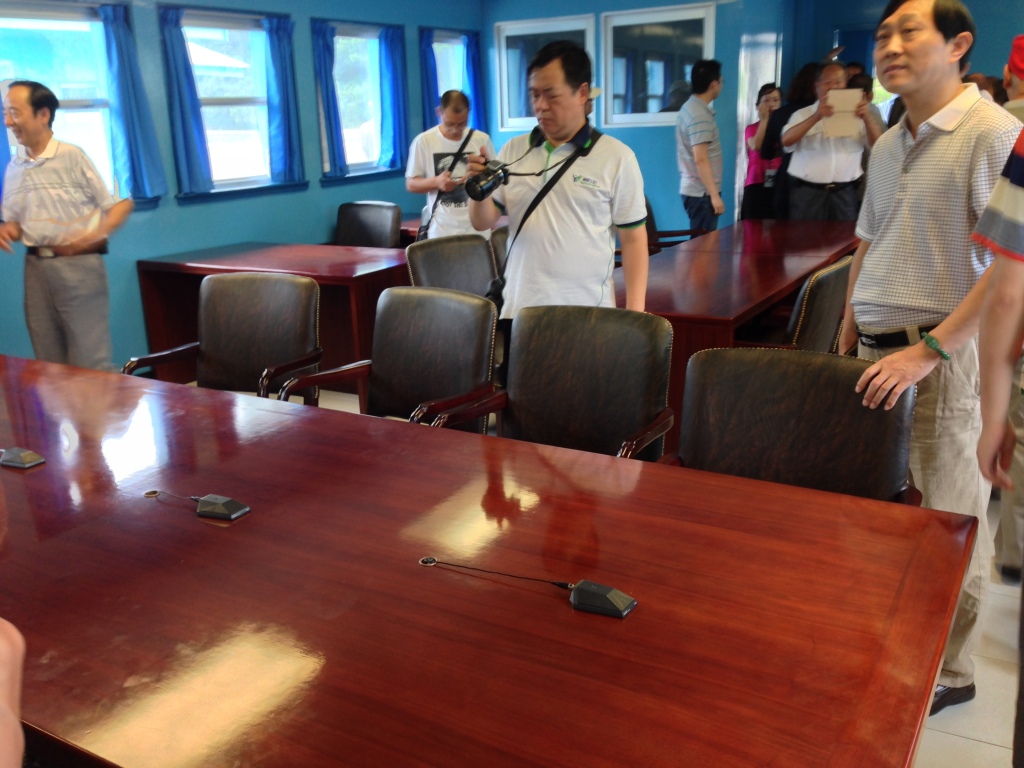
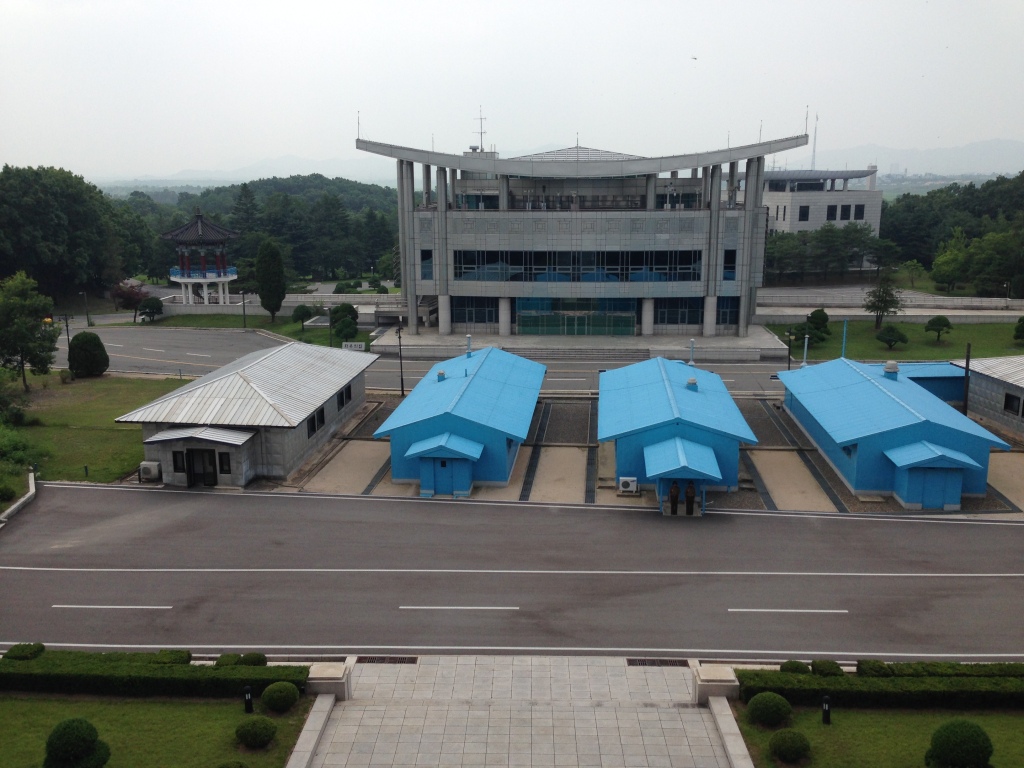
We entered the building to the left (this would be on the right from the South). Inside a couple of soldiers stood guard and the flags of the various nations involved in the war hung on their respective sides. Then we all went to South Korea. Technically.
We left the blue building and headed back up the steps towards Panmungak. This three storey building had an extra floor added to it so that it was taller than South Korea’s Freedom House. The UN forces decided not to extend their building any more because they didn’t want two empty sky scrapers in the middle of nowhere.
We went into Panmungak and straight up to the balcony so we could get some good pictures of the area. We also went for a group photo with the General himself.
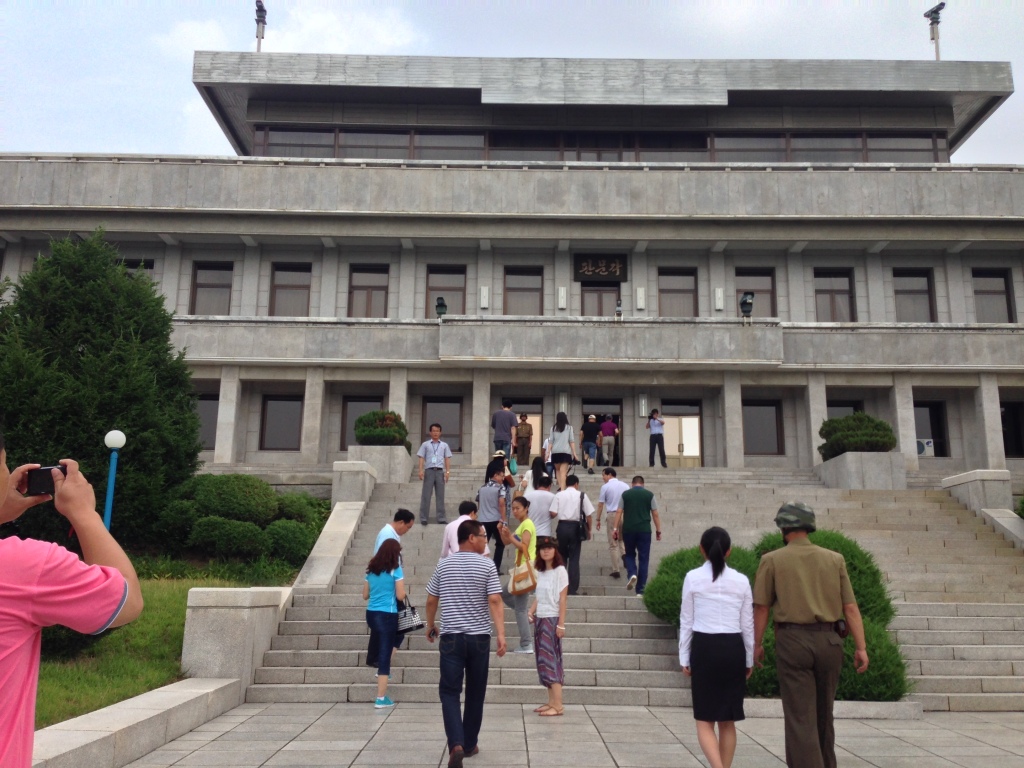
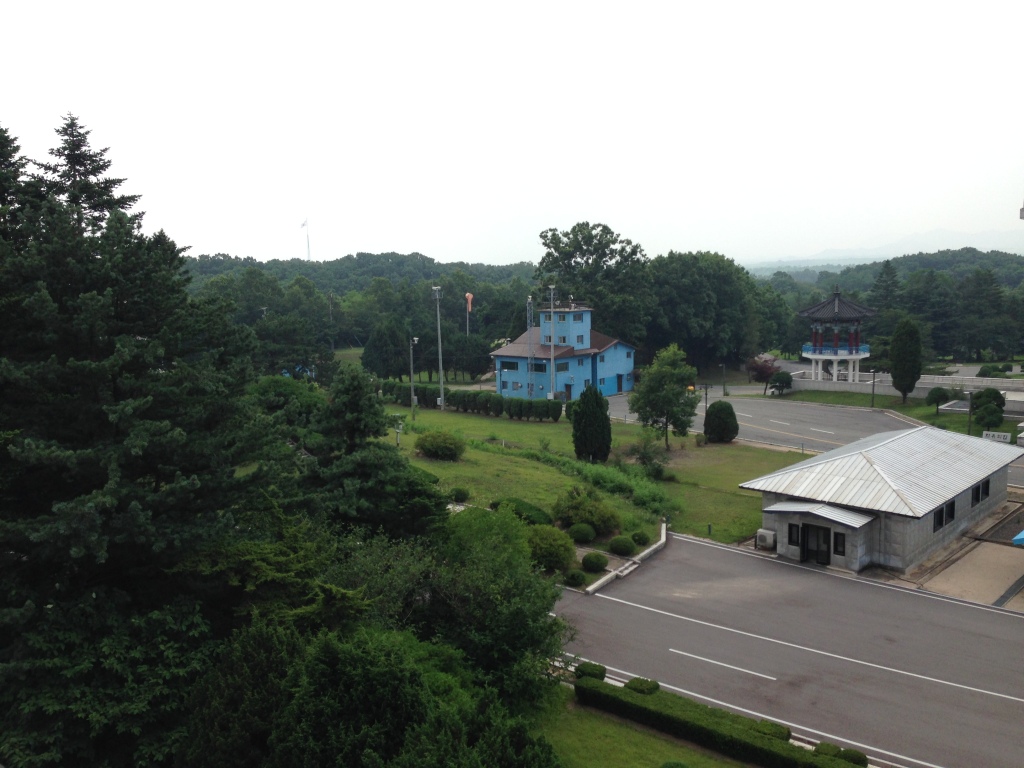
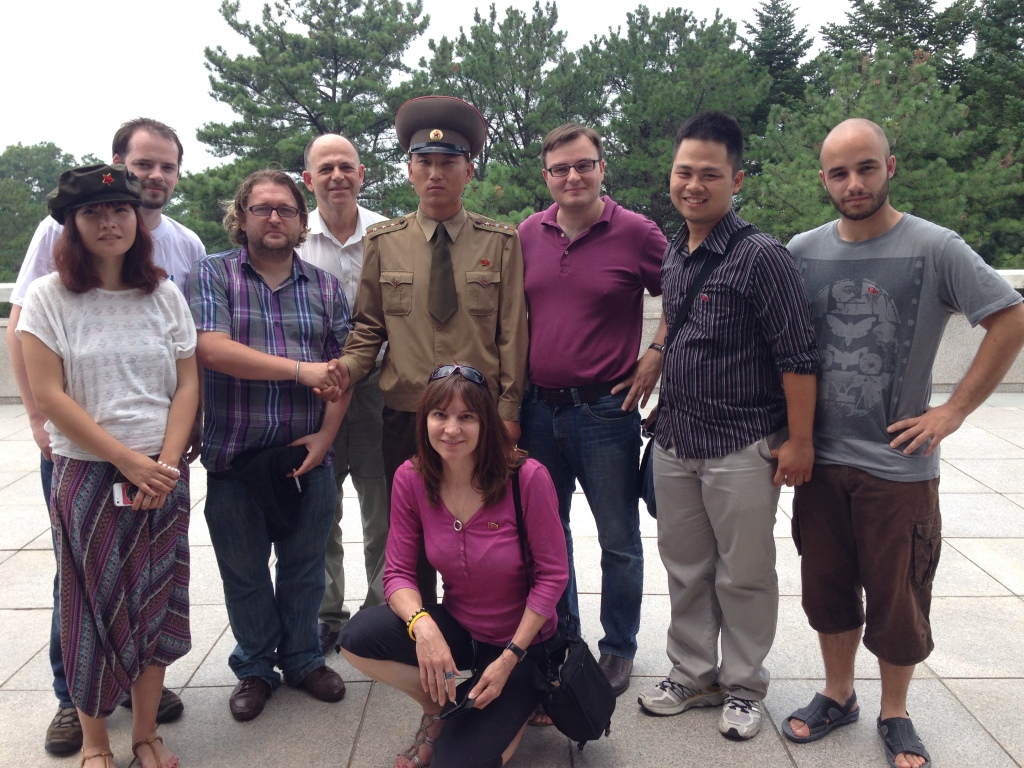
The surprising thing for me during this trip was how relaxed everything was during the tour.
When we visited from the South we were constantly reminded that we were in a warzone. If we didn’t follow orders then they would shut down the tour and send us all home. They told us stories of people who crossed the border illegally and got shot by North Korean soldiers. We were only allowed to take pictures facing North. I remember feeling nervous. I felt like anything could kick off at any time (even though I knew it wouldn’t).
None of that here. It felt a lot less intense. Everything was calm. It was just a normal tour. You still wouldn’t do anything stupid, but there was almost no pressure put on us. In a strange way I actually felt safer here than I did on the South.
I guess propaganda always comes from both sides in a war.
